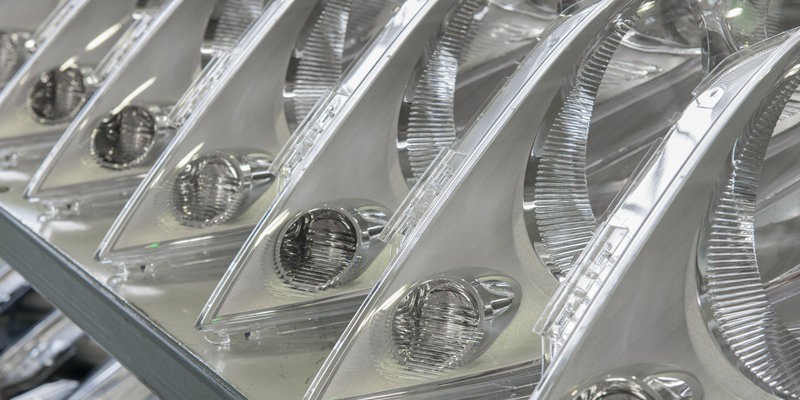- January 17, 2022
Vacuum metalizing is the process of physically plating a metal material onto a plastic part in a vacuum chamber. The technique was first used in the 1930s to make reflective films for lenses. Later, it was extended to various optical parts, such as street lamps and automobile headlights. It is also used as a functional film for aluminum coating plating of records, decorative coating of materials and surface modification. These applications include imitation gold plating of watch cases, metallic texturing of plastics, and metallic coating of mechanical tools.
Also, as countries around the world focus on environmental protection, the vacuum metalization process is gaining more and more attention as an environmentally friendly surface treatment that is carried out almost entirely in a vacuum chamber, where metal vapor is not released into the air.
In addition, as an important surface treatment, it is indispensable in the aluminum wire and custom machined parts industry.
What is the Vacuum Metalizing?
Vacuum metalizing, also called vacuum metallization, is a process that allows creating a metallic layer on metalized parts or a substrate and is a form of physical vapor deposition (PVD). It coats a metal (such as aluminum or copper) onto a non-metallic substrate by evaporation.
The evaporation of the metal occurs by feeding a metal wire into a heating source (involves heating) in a closed chamber under a high vacuum at approximately 1500°C (2700°F). The lack of pressure in the vacuum chamber lowers the boiling point of the metal parts, which causes the liquid metal to change from a condensed phase to a gaseous phase. The metal vapor adheres to the surface of the substrate, producing a metallic coating or decorative coatings on the thin film or fabric.
The Best Metal For Vacuum Metalizing
Compared to aluminum, copper and silver have better electrical conductivity, but copper is susceptible to oxidation and corrosion, while silver is more costly. Due to the relatively low cost and better reflective properties, the best metal material for vacuum metallization is still aluminum.
1)Aluminum: For reflective coatings, the most commonly used material is aluminum, which can produce a 90% reflectivity. Industrial, commercial and automotive lighting reflectors all use aluminum.
2) Copper: Due to its better conductive properties, it is generally used as a shielding coating. However, because it is susceptible to corrosion, it must be covered with oxide layer or another metal (such as nickel-chromium or stainless steel) to prevent discoloration or oxidation, so this coating is also thicker, typically 10 times thicker than other types of metallization.
The Vacuum Metalizing Process
In the vacuum metalizing process, the material is heated until the material vaporizes in a vacuum chamber. First, take a look at two methods of vacuum metallization.
Metallization methods
There are two main types of metallization methods below.
1. Physical vapor deposition (Thermal evaporation)
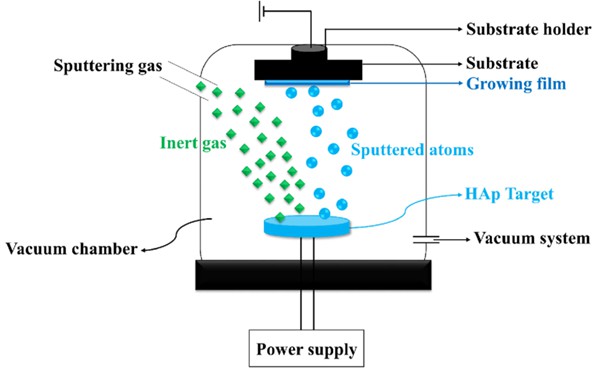
Vacuum evaporation coating or vacuum coating heats the coating material in a vacuum coating environment and makes it evaporate in a very short time. The evaporated molecules of the coating material are deposited on the plastic surface to form a coating layer, which is generally used to evaporate low melting point metals such as aluminum.
This method is simple and convenient, easy to operate, fast and efficient film formation, and is the most widely used technology in thin film vacuum preparation.
2. Chemical vapor deposition (Sputtering)
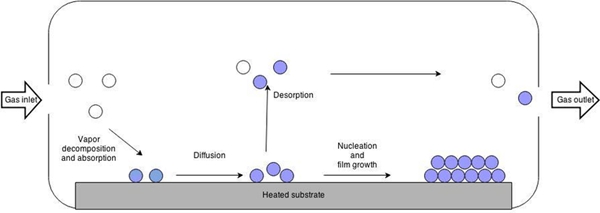
The inert gas is filled in the vacuum and a high-voltage direct current is added between the plastic substrate and the metal target. The electrons generated by the glow discharge excite the inert gas and produce plasma, which knocks out the atoms of the metal target and deposits them on the plastic substrate. The adhesion of the coating film to the plastic surface is better than that of evaporation coating, and the film layer is dense and uniform.
Vacuum metallization: step by step
Both types of metallization follow the same steps:
1. Customized fixtures and clamping of parts
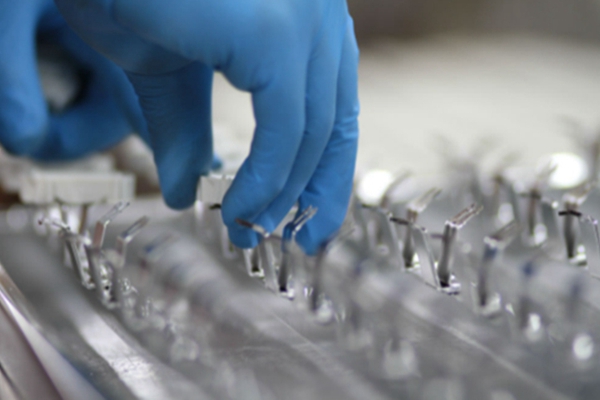
Custom jigs and fixtures are used to hold the parts in place for maximum efficiency during vacuum metalizing and painting operations, and for best masking results, with significant cost and quality control. Also, individual parts are inspected for visible defects prior to clamping to ensure the quality of the metalized coating.
2. Primer application
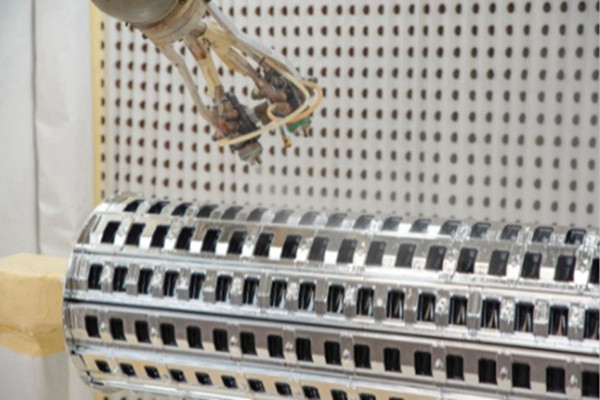
By spraying a special primer, adhesion or abrasion resistance is improved and a smooth surface is provided for metallization and paint finishes. This step is a pretreatment prior to vacuum metallization. After priming, the part is placed in a convection oven for curing along with the fixture.
3. Vacuum Metallization
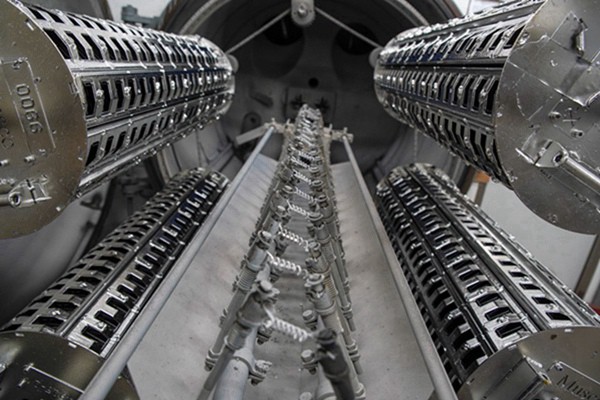
The fixture is placed on a turntable in the vacuum chamber. A filament (tungsten filament or tungsten wire of an alloy) is used to evaporate the metal (most commonly known as aluminum vapor), creating a vapor cloud that bonds to the part. The work holding fixture is rotated in front of the evaporation source to achieve a uniform coating. After the metallization process is complete, the chamber is returned to match the atmosphere and the work holding fixture is removed.
4. Apply top coat
Depending on the required coating properties of the part, a top coat (top coating) can be applied to improve the chemical resistance, moisture resistance or wear resistance of the part and enhance its appearance of the part. Examples include 2K polyurethane and UV-curable wear-resistant clear coat; functional industrial top coating or top coat such as Teflon and ceramic coatings; stained and tinted finishes to give gold, bronze, colored chrome, and metallic satin finishes, etc.
5. Quality Inspection
The plastic parts and plastic components are inspected for quality according to ISO 9001 standards and the specific requirements of the project. In addition, for easy traceability throughout the process, a tracking label can be attached to each part so that errors can be traced and corrected if they occur.
What is the difference between Vacuum Metalizing and Electroplating?
Both vacuum metalizing and electroplating are essentially plating a layer of metal on a substrate, so what is the difference between them?
1. The material of metal plating
In the custom parts processing industry, vacuum metalizing is generally aluminum plating, and electroplating is generally chrome or nickel plating.
2. Plating environment
Generally, PVD vacuum metalization ( PVD application process) is done in a vacuum environment, which requires high environmental and equipment requirements and is relatively costly, while electroplating is done in an electrolyte solution, which is a relatively simple process.
3. Color and durability
The color of vacuum metallization coating is more selective and brighter than that of water plating, and the color retention time is also longer and less prone to corrosion.
4. Environment friendly
Vacuum metallization is carried out independently in a vacuum chamber, and the steam is not easily discharged to the outside environment, which is green and environmentally friendly. While electroplating is a traditional process, the plating generally uses ‘hexavalent chromium’, high pollution.
The Benefits Of Vacuum Metallizing
1. It is more cost effective. Vacuum metallization is easier to meet your needs for a specific look, and it is environmentally friendly.
2. Safer than other processes such as chromium plating. Vacuum metallization does not require the dangerous mixture of chromium and cyanide, and the purer process reduces the risk of chemicals in the part causing problems for people.
3. Meets a wide range of functional and decorative coating requirements and addresses specific industrial coating challenges. It has many benefits, such as shielding from electronic interference, moisture or vapor barriers, coating uniformity. moisture or vapor barriers, high tolerances for properties such as coating uniformity and adhesion, improved reflectivity, etc.
The applications for vacuum metalizing
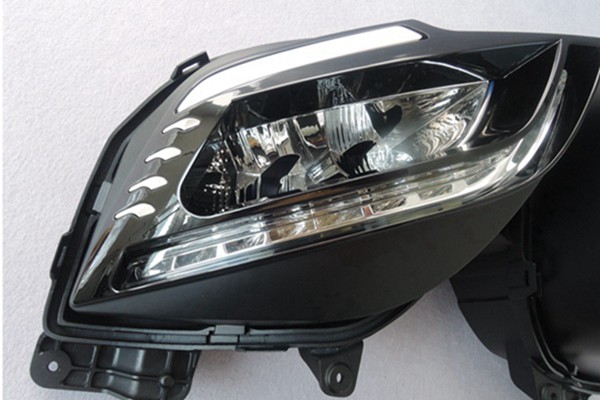
Vacuum metalizing coatings are used in a variety of industries, such as vehicle lighting and components, electrical components, cosmetics and product packaging, EMI/RFI/ESD shielding, vapor barrier protection, solar/photovoltaic, etc. It can be grouped into the following broad categories.
1. Vacuum metallization for decoration
Aesthetically, it adds a unique and eye-catching appearance. Metallized substrates can have a highly reflective mirror finish or be used in combination with other processes such as coating or laminating to produce a decorative effect.
Vacuum metalized films can also be dyed and/or coated to give the substrate a unique color. The most typical application would be gold and silver wire, which has become an indispensable decorative material for textiles using polyester films coated with aluminum and then processed.
In addition, the decorative plastic coating is also widely used in instruments, machinery, automobiles, toys, lamps and household appliances, etc., which has high economic value and practicality.
2. Vacuum metallization for insulation applications
Vacuum metallization is widely used to increase the functionality of films or fabrics. Vacuum aluminized films (PVD)) are ideal for insulation applications because the film metallization improves reflectivity/radiation properties.
Commercial and residential radiation barrier insulation materials gain their functionality from the vacuum metallization process. Insulation systems used to protect spacecraft for critical space missions consist of multiple layers of polyimide film and other films that have undergone our film metallization process.
After surface metallization, the fully insulated plastic surface has the properties of metal to reflect, absorb, conduct and attenuate electromagnetic waves, providing a shield against electromagnetic interference.
3. Vacuum metallization for improved barrier properties
In order to improve the circulation cycle and shelf life of goods, the role of commodity packaging is increasingly important, especially for food, drugs, cosmetics, detergents, and other goods with high-quality requirements, the use of high barrier performance packaging materials packaging is often the most effective means.
The film metallization process also reduces the light transmission of the substrate, making it an effective light barrier, which is critical to limiting the amount of UV exposure.
4. Vacuum metallization for the reflectivity of optical parts
Vacuum metallization (especially aluminizing) is most commonly used for a variety of optical lighting parts, such as reflectors for bicycles and automobiles. Among our customers, automotive customers use PC or aluminum to mirror polish the surface at the prototype stage and then metalize the surface to test the optical reflectivity and mimic the mass-produced injection molded parts.
conclusion
Vacuum metallization is a complex post finishing that requires a controlled vacuum environment and is generally intended for mass production.
At WayKen, there is no minimum order quantity, and we improve quality even if it is a prototype, only one piece. If you have a custom part project, whether it’s a CNC prototype for metallization or a rapid mold for metallization, we have a one-on-one project manager corresponding to your project to give you professional advice and provide the best quality. Upload CAD files for more details.

